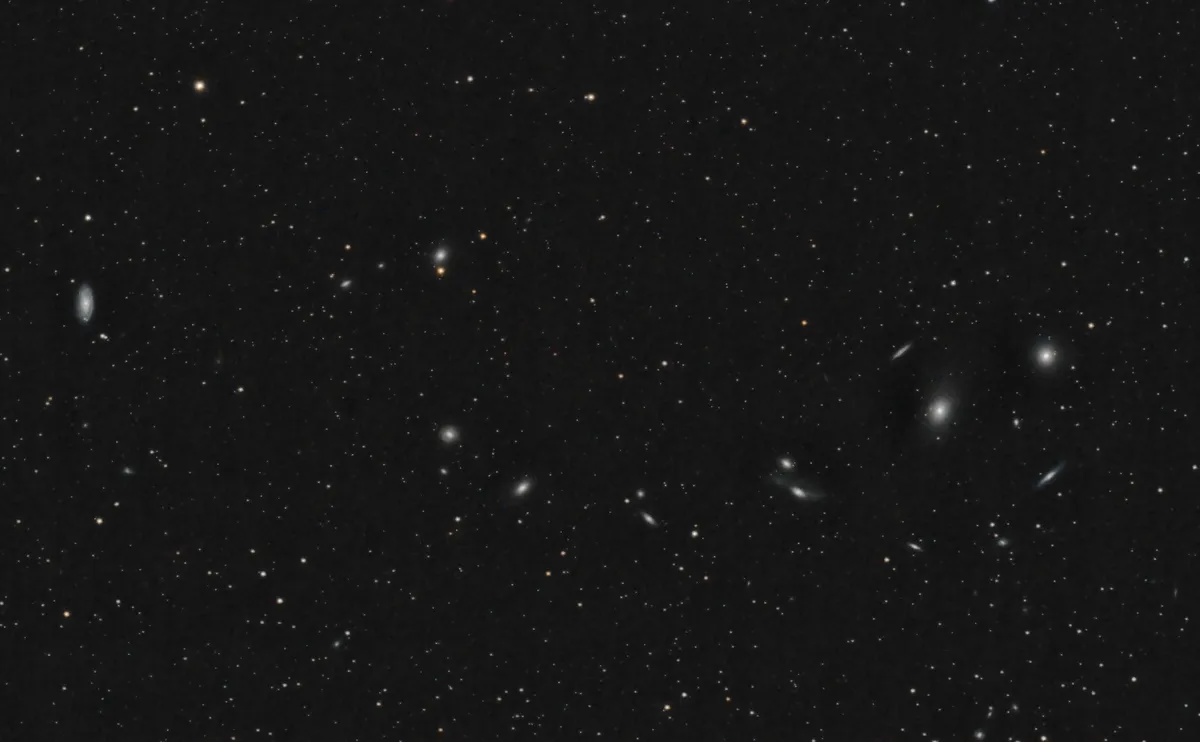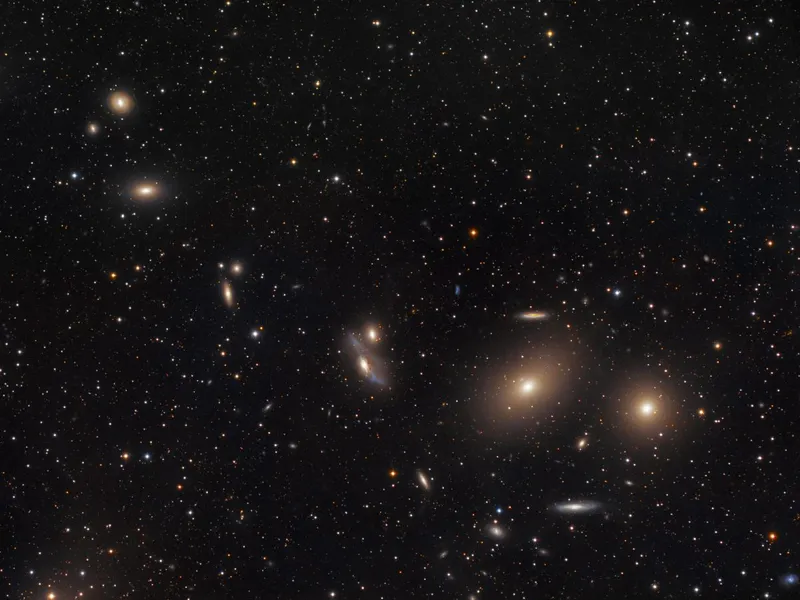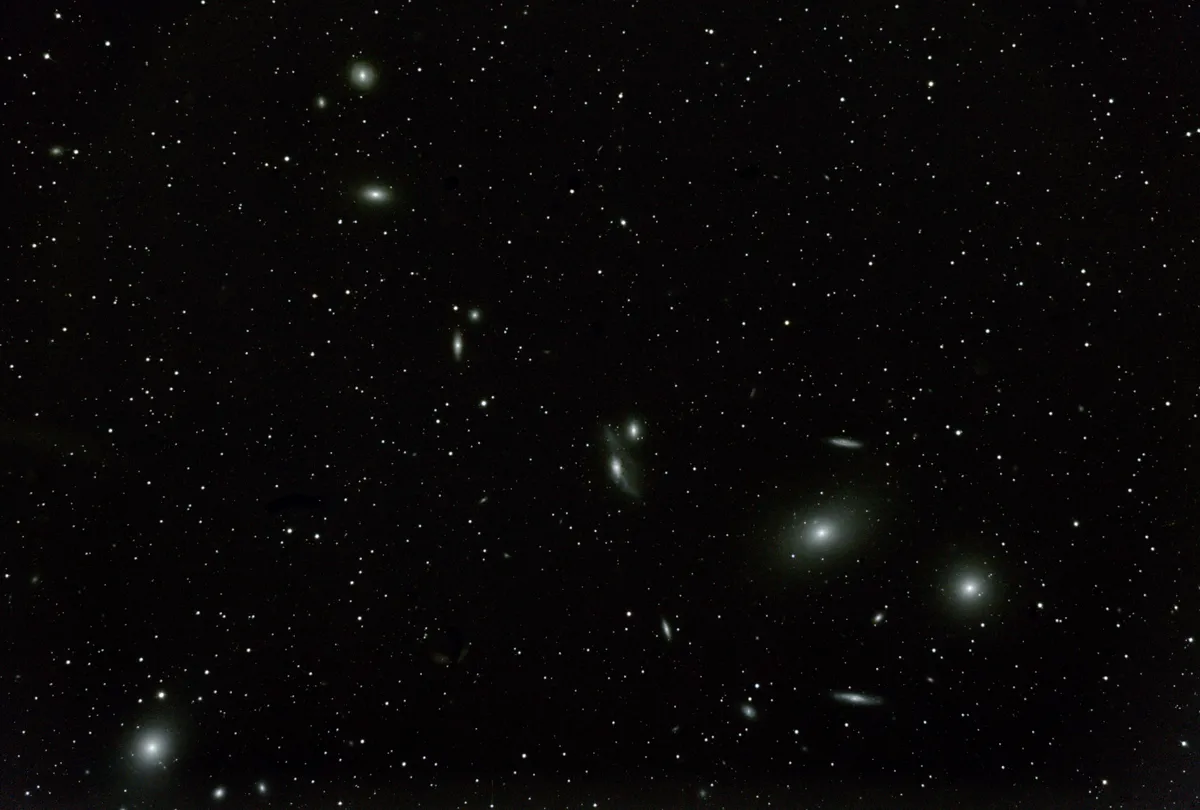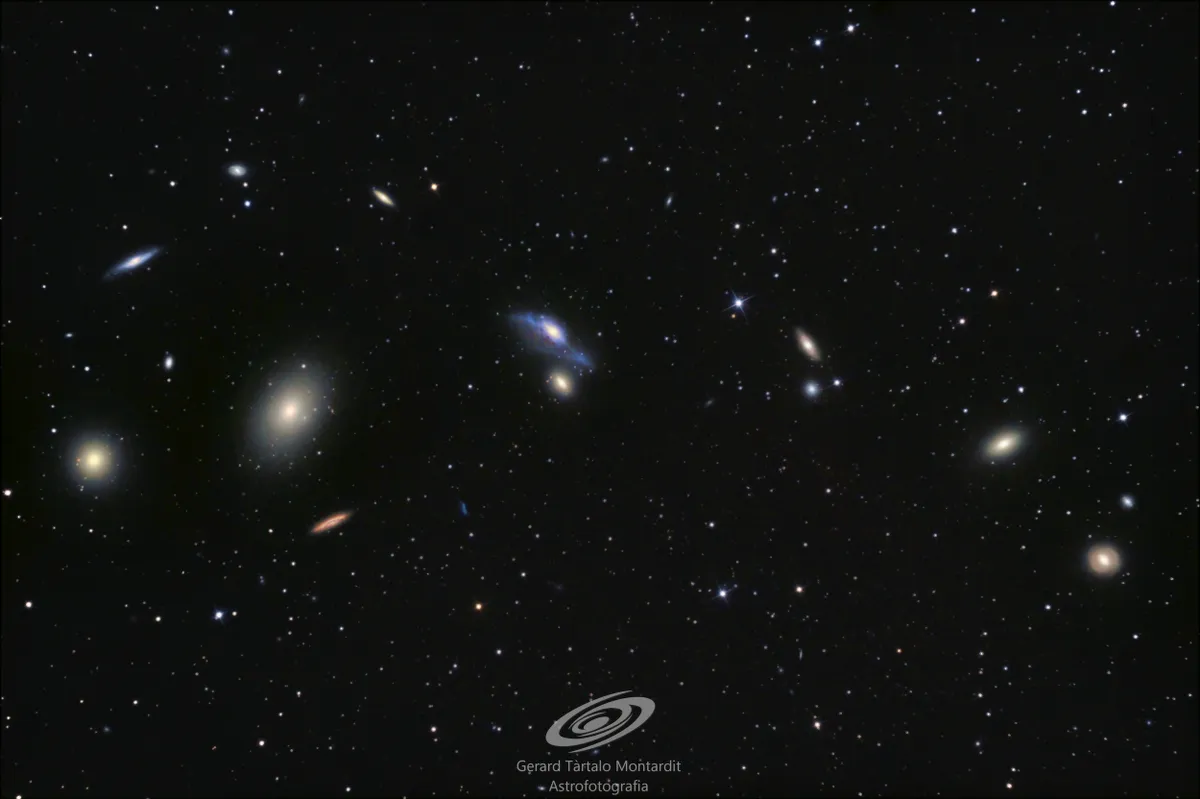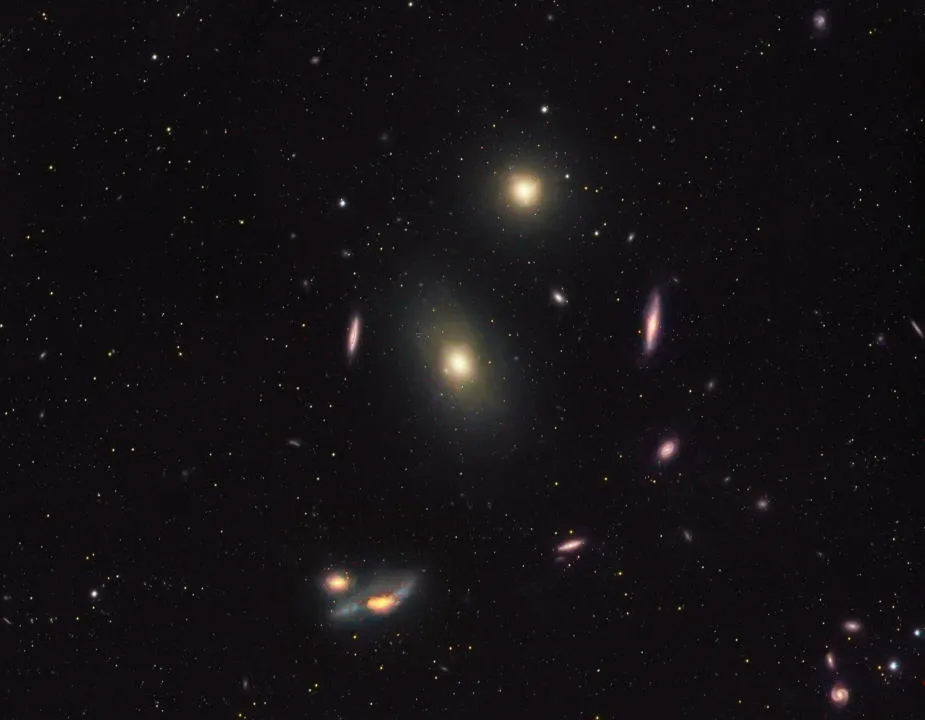Markarian’s Chain is a string of large spiral and lenticular galaxies that's best seen in the spring and early summer.
It's most visible from March to June, and if you want to observe it through your telescope, a 75mm refractor to 200mm reflector should provide excellent views.
To photograph the entire Markarian's Chain, a DSLR and long lens (300mm focal length) does the job nicely.
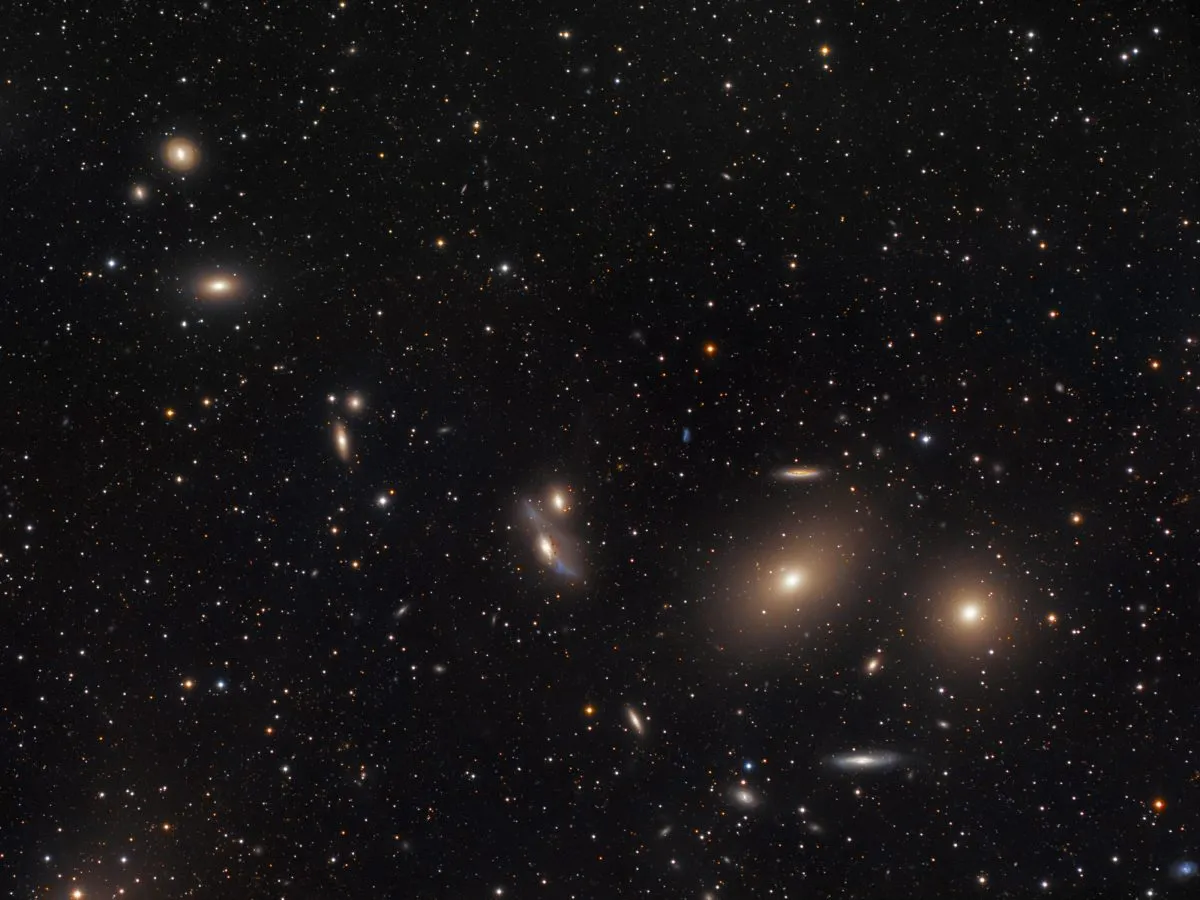
Observing Markarian's Chain
If you point your scope in the vague direction, you will doubtless land on a galaxy-rich landscape.
The main belt is made up of seven bright galaxies including M84 and M86.
There is also a pair of interacting Galaxies (NGC 4435 and NGC 4438) known as Markarian’s Eyes. Other dimmer galaxies float alongside.
You’ll be able to pick up brighter parts of the chain with a pair of 100mm binoculars in dark skies, but a telescope is better.
Markarian’s Chain can be viewed with a small refractor in its entirety; however you will still see the brighter galaxies as fuzzy white blobs.
Medium power eyepieces of around 15mm focal length allow you to get in a little closer.
For detail, use a longer focal length and a larger aperture such as a 200–250mm reflector, and hop from galaxy to galaxy along the chain.
To photograph it, use a DSLR camera tagged onto the end of a 70mm refractor. Stacking about an hours’ worth of 1-2 minute exposures is a good start.
Find out more in our guide on how to attach a DSLR to your telescope.
How to find Markarian's Chain

The Virgo Cluster consists of around 2,000 galaxies.
Due to the cluster’s size and sheer number of objects in it, finding Markarian’s Chain can be problematic.
Key to locating it is to find the Bowl of Virgo star pattern.
A Go-To setup will help here, as you can search for one of the brighter galaxies – like M86 – to locate it.
By eye, draw a straight line between the stars Denebola in Leo, the Lion, and Vindemiatrix in Virgo, the Virgin.
The chain is about halfway between.

Tips for observing
Galaxies are delicate objects to observe, so ensure your eyes are fully dark adapted (at least 20 minutes) when observing.
A dark site will help reveal fainter galaxies in 150–200mm aperture telescopes.
Larger galaxies will still be visible under mild light pollution but quickly get washed out as you climb up the Bortle scale into greater light pollution.
Because of this, it’s also best to view Markarian's chain at new and early Moon phases.

What's in Markarian's Chain?
It contains at least 7 different galaxy members that appear to move coherently: notably 2 huge, bright lenticular galaxies known as M84 and M86 (both members of the famous Messier Catalogue of deep-sky objects).
It also contains a duo of interacting galaxies often referred to as Markarian’s Eyes: NGC 4435 and NGC 4438.
The Virgo Cluster is a galaxy cluster that contains up to 2,000 galaxies and is gravitationally interacting with our own Local Group of galaxies. Its centre is about 70 million lightyears from Earth towards the Virgo constellation.
Images
Below are some of the best images sent to us by readers of BBC Sky at Night Magazine and astrophotographers around the world.
For more on capturing images of the cosmos, read our beginners’ astrophotography tutorial or browse all of our astrophotography guides.
And if you would like to submit your own pics for potential inclusion in the magazine, find out how to send us your images. You can also share them with us via Facebook, Twitter and Instagram.

